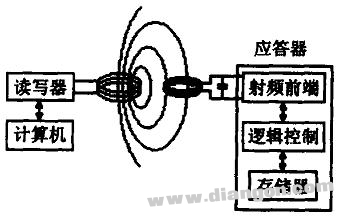Common material pore analysis method - Database & Sql Blog Articles
RFID application systems typically consist of a reader/writer and an RFID tag, as illustrated in Figure 1. The reader/writer functions as a computer terminal used for reading, writing, and storing data on the RFID tag. It is composed of a control unit, a high-frequency communication module, and an antenna. On the other hand, the RFID tag is a passive transponder that mainly includes an integrated circuit (IC) chip and an external antenna. The RFID chip usually integrates the RF front-end, logic control, and memory circuits, and some even combine the antenna on the same chip.

Figure 1: Schematic Diagram of the RFID System
The basic working principle of the RFID system involves the RFID tag entering the RF field of the reader. The antenna of the tag induces a current, which is then used as a power source for the chip through a boosting circuit. This current carries information, which is detected by the RF front-end circuit and converted into a digital signal sent to the logic control circuit for processing. When data needs to be retrieved, it is fetched from the memory and transmitted back to the RF front-end via the logic control circuit, and finally sent back to the reader through the antenna.
As you can see, the antenna plays a crucial role in the data communication between the RFID tag and the reader. For passive tags, the antenna is essential for capturing enough energy from the electromagnetic field generated by the reader's antenna. Additionally, the antenna defines the communication channel and method between the two devices.
Today, RFID technology is widely adopted across various industries. International standards such as ISO 10536, ISO 14443, ISO 15693, and ISO 18000 have been established to regulate the performance of RFID systems. These standards not only define the data frame protocols but also specify physical characteristics like working distance, frequency, and coupling mode. With these technical specifications standardized, the selection of RFID antennas becomes more precise and efficient.
In practice, several types of RFID antennas are commonly used, each with its own advantages and applications. Understanding their performance helps in choosing the most suitable one based on specific use cases.
Steel cross arms of different configurations are used on overhead lines, transmission towers, transmission lines, wood poles, utility poles, power poles, and light poles.
To make the steel cross arm more stable, there will be two cross arm braces to support the main cross arm by delta connection.
Steel Cross Arm&brace,Hollow Steel Bracket For Pole Supporting,Hdg Cross Arm For Supporting,Channel Cross Arm Brace
Shahe Yipeng Import and Export trading Co., LTD , https://www.yppolelinehardware.com